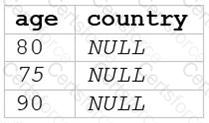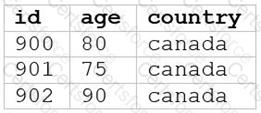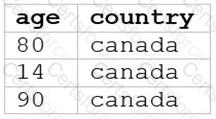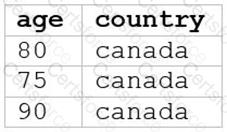A data analyst runs the following command:
SELECT age, country
FROM my_table
WHERE age >= 75 AND country = 'canada';
Which of the following tables represents the output of the above command?
A)

B)

C)

D)

E)

A data analyst needs to share a Databricks SQL dashboard with stakeholders that are not permitted to have accounts in the Databricks deployment. The stakeholders need to be notified every time the dashboard is refreshed.
Which approach can the data analyst use to accomplish this task with minimal effort/
What is used as a compute resource for Databricks SQL?
A business analyst has been asked to create a data entity/object called sales_by_employee. It should always stay up-to-date when new data are added to the sales table. The new entity should have the columns sales_person, which will be the name of the employee from the employees table, and sales, which will be all sales for that particular sales person. Both the sales table and the employees table have an employee_id column that is used to identify the sales person.
Which of the following code blocks will accomplish this task?
A)

B)

C)
D)

Consider the following two statements:
Statement 1:

Statement 2:
Which of the following describes how the result sets will differ for each statement when they are run in Databricks SQL?
After runningDESCRIBE EXTENDED accounts.customers;, the following was returned:

Now, a data analyst runs the following command:
DROP accounts.customers;
Which of the following describes the result of running this command?
A data analyst has recently joined a new team that uses Databricks SQL, but the analyst has never used Databricks before. The analyst wants to know where in Databricks SQL they can write and execute SQL queries.
On which of the following pages can the analyst write and execute SQL queries?
The stakeholders.customers table has 15 columns and 3,000 rows of data. The following command is run:

After runningSELECT * FROM stakeholders.eur_customers, 15 rows are returned. After the command executes completely, the user logs out of Databricks.
After logging back in two days later, what is the status of thestakeholders.eur_customersview?
Which of the following is a benefit of Databricks SQL using ANSI SQL as its standard SQL dialect?